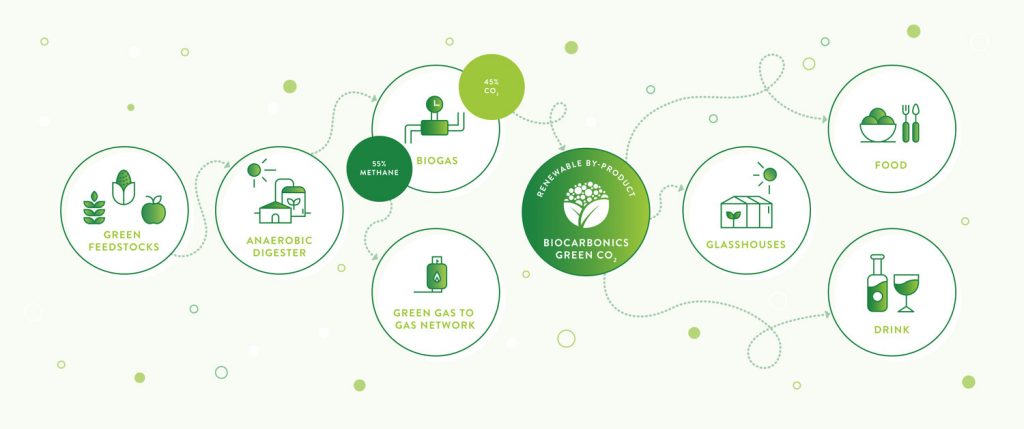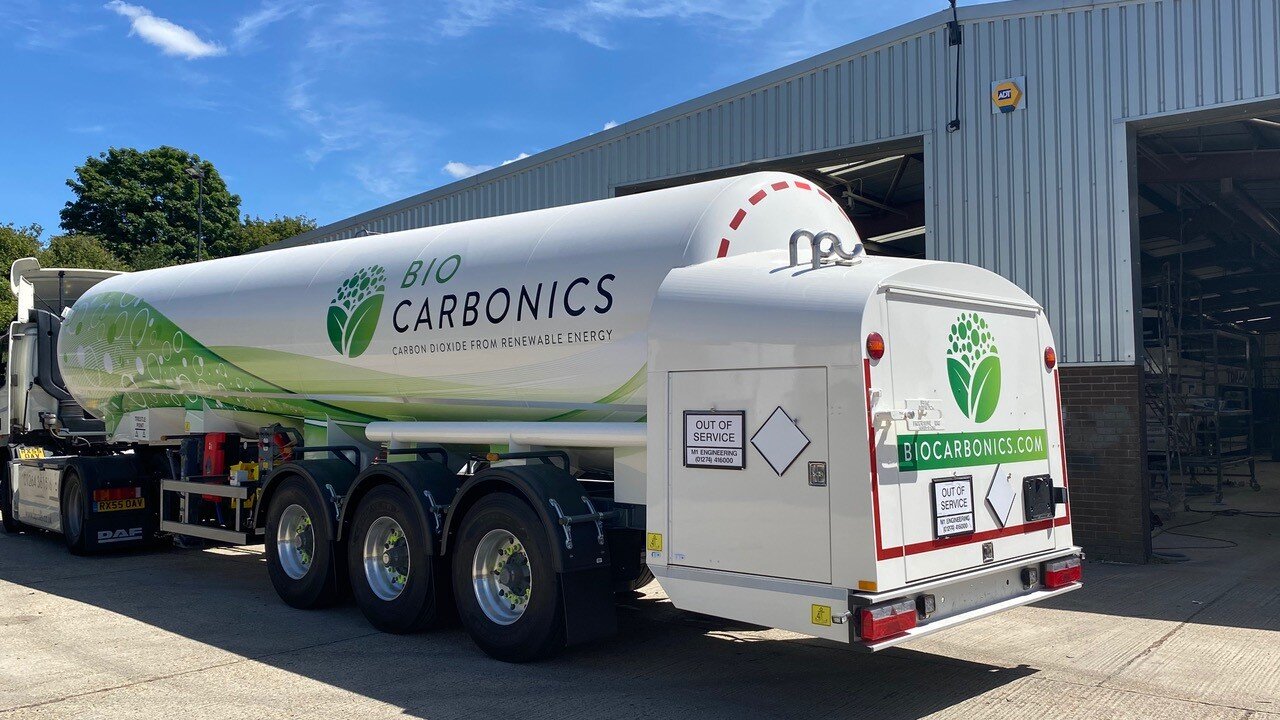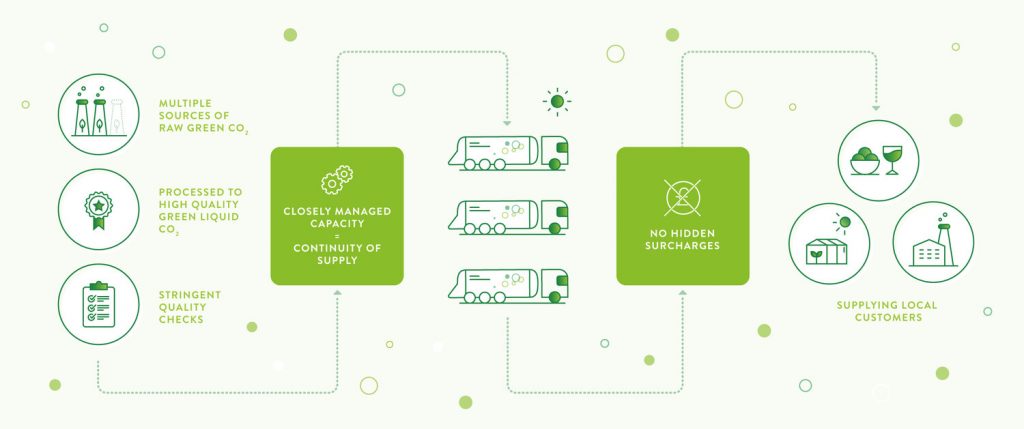
AD owners and operators injecting Biomethane to grid have a new opportunity to benefit from an innovative Carbon Capture and Utilisation (CCU) model. A new channel to market has been created specifically for the biogas industry in the UK, to enable CO2 captured from biogas facilities to be taken to market.
Green CO2 produced from biogas has a higher reliability of supply, and is a more sustainable product than the traditional CO2 sourced from fossil fuel sources. In addition, capturing and utilising this CO2 contributes to the RHI sustainability criteria for AD plants, and can boost the bottom line with long-term offtake agreements.
The proposition is being launched by BioCarbonics, a new player in the UK CO2 industry, to ensure continuity of CO2supply in a historically unpredictable industry. “We work with biogas owners to capture and process their CO2 stream to produce a food and beverage quality liquid CO2 , for use by local businesses. And because we have a growing number of highly reliable plants operating around the clock, with a managed maintenance schedule, we are the only business that can offer continuity of supply to customers and no hidden surcharges,” explains Christopher Carson, BioCarbonics managing director.
“Our carbon capture model is totally unique in that we support plant owners from conceptual design through installation and start-up of their CO2 plants, and work with them to install and operate quality systems and equipment that ensures their product meets the food and beverage quality certification. We are actively seeking biogas owners who inject renewable methane into the gas grid to work with us and expand our sustainable supply model further,” says Christopher.

Hereford biogas plant owner, Nicholas Layton of STL Energy, who has been working with BioCarbonics for a number of years, says there are many benefits to capturing CO2 from biogas installations. “Capturing this CO2 for use in other applications is much more sustainable than directly releasing it into the atmosphere, and it helps local CO2 users, such as food and drinks producers. The multiple plant model delivers a reliable supply chain, and the guidance and advice provided by the BioCarbonics team has been second to none. We didn’t have the expertise or knowledge required to enter into the CO2 business on our own, and BioCarbonics gave us the support and training we needed to be able to do this successfully.
“In our sustainability reporting for the plant, the carbon capture means that the emissions effectively become negative across all of our feedstocks, and the RHI eligibility has never been in question,” says Nicholas.
“One of the customers we work with is Westons Cider, which supplies the biogas plant with apple pomace – a by-product from apple pressing, and uses BioCarbonics’ CO2 to carbonate its drinks, also a by-product, leading to a great circular model,” adds Nicholas.
Westons Cider has been using green CO2 since the summer of 2019. “Before working with STL Energy and BioCarbonics, we had CO2 supply issues. Now, from the circa 29,500 tonnes of cider apples we press annually, around 5,500 tonnes of pomace will be turned into CO2 and used to carbonate our products,” says Maddy Spencer, purchasing Manager at Westons Cider.
“The supply is local and more reliable than previous suppliers. BioCarbonics is professional, efficient and pro-active, providing multiple sources so we never run out,” adds Maddy.
The BioCarbonics management is actively looking to find other AD biomethane to grid producers who are interested in supplying CO₂ to help grow this network.

Contact
Christopher Carson
E-Mail: ccarson@biocarbonics.com
Source
Biocarbonics, press release, 2021-08-10.
Supplier
Share
Renewable Carbon News – Daily Newsletter
Subscribe to our daily email newsletter – the world's leading newsletter on renewable materials and chemicals













